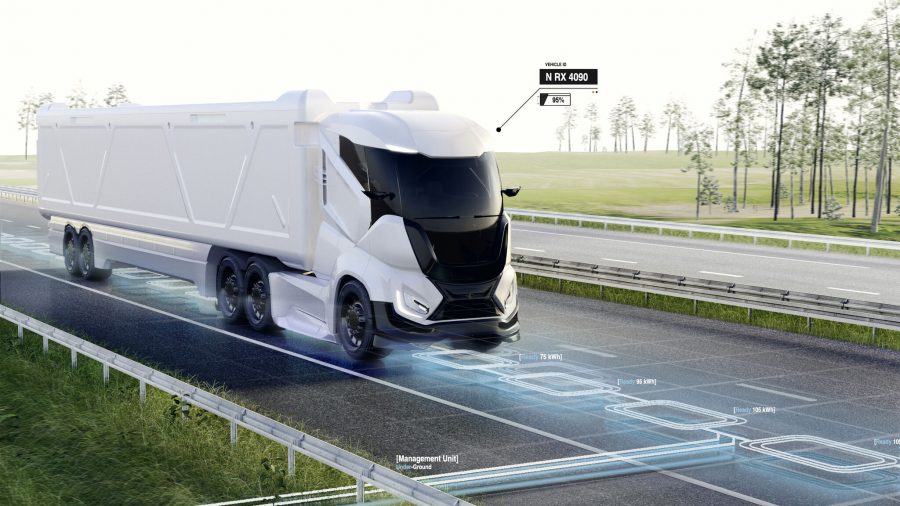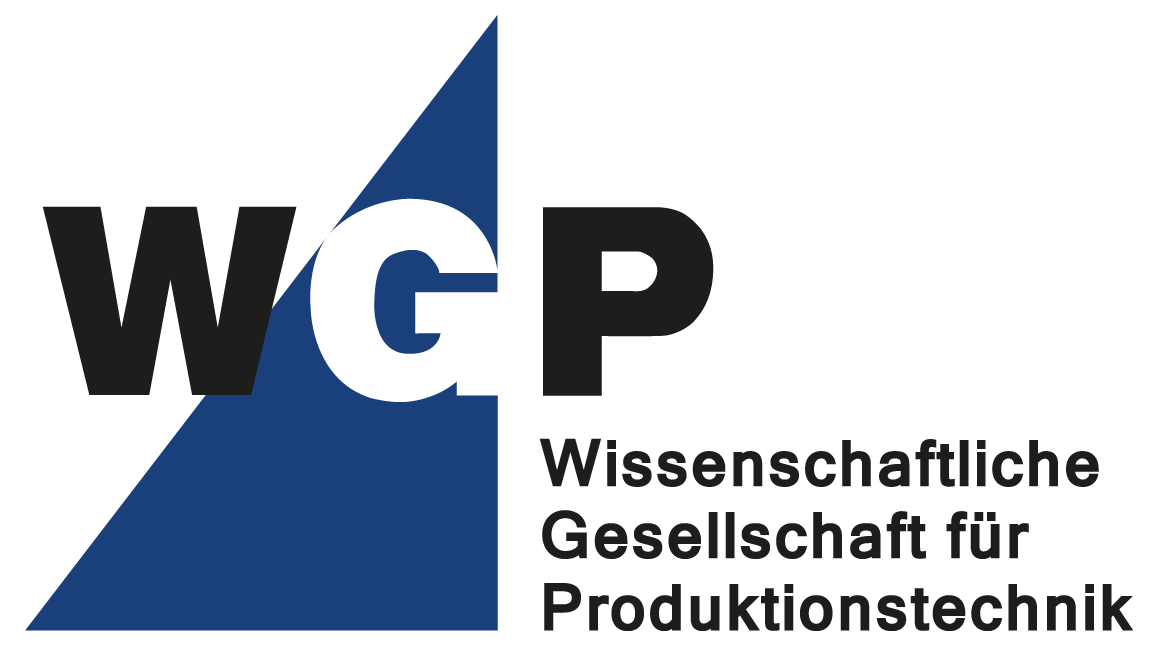
Frankfurt, August 27, 2025 – Charging an electric car while driving on the highway – that may sound utopian. But this is exactly what is already being tested on a one-kilometer test track in the Upper Palatinate region of Germany. “Inductive energy transfer while driving can eliminate the range limitation for electric cars, reduce the space and investment required for ultra-fast charging systems, and, in the long term, lessen German OEMs’ dependence on Chinese battery supplies,” emphasizes Jörg Franke, head of FAPS (Chair of Manufacturing Automation and Production Systems) at the University of Erlangen-Nuremberg. The WGP professor (Scientific Society for Production Technology) is the intellectual father of the southern German project to electrify highways. “IPT technology reduces resource consumption compared to large batteries and can give German industry a significant global competitive advantage – if it is used consistently.”
Induction coils have been installed in the asphalt surface of the A6 motorway between Nuremberg and Amberg, and tests have been conducted with specially equipped test vehicles for several months. “In the fall, we will organize an official test drive with different types of vehicles,” reports Prof. Florian Risch, project manager at FAPS. Risch is also head of the E|Road Center in Hallstadt, which opened in April this year. This technology center, run by Fraunhofer IISB (Integrated Systems and Device Technology) and FAPS, conducts research into contactless energy transfer systems (IPT, Inductive Power Transfer) for static applications, such as in parking lots, semi-dynamic applications, such as at taxi stands or bus stops, and dynamic inductive energy transfer on roads. “The center is unique worldwide,” says Risch, “because it is the first to combine flexible production environments, development laboratories, and test systems under one roof.”
Simple principle that can be implemented relatively quickly
Jörg Franke has been enthusiastic about the topic since he rode an inductively charged electric bus in Korea in 2010. “Nikola Tesla already impressively demonstrated the possibility of contactless energy transfer at the end of the 19th century,” reports the Erlangen professor. “In around 15 years, inductive energy transfer has been optimized using modern power electronics and perfectly tuned oscillating circuits.” Induction coils are embedded in the road surface of the highway. They generate an alternating magnetic field, which in turn induces voltage in coils in the underbody of the test cars when they drive over them. In this way, energy is transferred from the coils in the road to the car. The coils for the test track were developed and supplied by the start-up Seamless Energy Technology from Nuremberg, a spin-off of FAPS. The Israeli company Electreon Wireless and the road construction company Eurovia are also involved. The project was launched in 2022 and is financed by the German Federal Ministry of Economics.
While driving on the highway, the battery’s state of charge is stabilized by at least a trickle charge; depending on the available charging power, the state of charge (SoC) can even be increased beyond that. This ensures that sufficient energy is available for purely electric driving for the final stretch to the destination. “So it is not necessary to electrify Germany’s entire road system; the main traffic arteries are sufficient,” says Franke. The whole thing could also be implemented in a relatively short period of time, because “the asphalt surfaces have to be renewed every ten years anyway.” The induction coils could be installed at the same time.
Synergies for autonomous driving
Efficient energy supply could not only give a boost to the flagging e-mobility sector, but also to autonomous driving. “In China and the US, large fleets of autonomous robot taxis and shuttle systems are already in regular operation and are achieving significant productivity gains through optimized use of time and resources,” reports Risch. “In Europe, there is still a considerable need to catch up in this area, not least in view of the growing shortage of skilled workers. And looking to the future, it stands to reason that autonomous electric vehicles will organize their own energy supply without the need for a human to manually plug them into a charging station.” Driverless transport vehicles in industry have also been able to drive and charge using inductive energy transfer for a long time.
Costs significantly lower than current trends
The costs for IPT technology are comparatively low compared to solutions such as the Megawatt Charging System (MCS) and in-house battery production. We estimate an investment of around one million euros per kilometer and lane,” Franke calculates. “With around 13,000 km of highways and electrified lanes in both directions, we would arrive at a total of around €30 billion. That would be just three percent of the €1 trillion infrastructure package,” says the WGP researcher. “Spread over the ten-year road surface renovation cycle, around €3 billion would have to be raised each year for the electrification of the highways.”
This sum could be financed by an infrastructure charge of 20 cents on each of the approximately 15 billion truck kilometers driven annually on German highways, which would roughly correspond to the truck toll charges. Since fleet operators could save around 20 cents per kilometer in energy costs by switching to electric drive, this measure would not only be a powerful driver for electric heavy-duty transport, but also a powerful opportunity to improve the competitiveness of German freight forwarders and truck OEMs in international competition.
Geopolitical autonomy instead of dependencies
Geopolitical uncertainties weigh more heavily than costs. “The crucial question is whether we want to strategically use the necessary renewal of our infrastructure to reduce our dependence on Asian battery manufacturers,” says Risch. “In cell production, these suppliers have already achieved significant economies of scale and technological advantages, which are reflected in permanently lower production costs. Catching up in price competition therefore seems hardly realistic; rather, the difference is likely to increase. At the same time, more and more different battery materials are needed, while the batteries themselves are getting bigger and bigger. This not only increases the demand for raw materials – especially lithium, cobalt, and nickel – but also the dependence on global supply chains and thus the vulnerability of the entire European value creation system.” Easier-to-access and cheaper materials such as copper and aluminum are needed for the induction coils.
Last but not least, this technology also offers Germany the opportunity to take on an international pioneering role. “Relevant projects are currently being initiated and continuously developed throughout Europe. Sweden and France in particular are already showing a high level of interest,” says Risch. “However, the broad interest in several European countries is ideal, as this initiative must be a pan-European approach from the outset, aimed at knowledge transfer and technology diffusion in the long term.”
Download:
Image 1: Electric Road System based on contactless energy transfer, source: FAU
Image 2: Prof. Jörg Franke, Head of the (FAPS) at the University of Erlangen-Nuremberg (FAU); source: FAPS Erlangen
Image 3: Prof. Florian Risch, source: FAU
